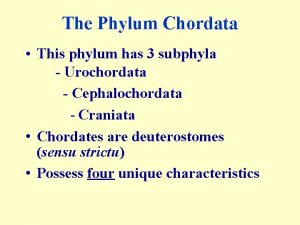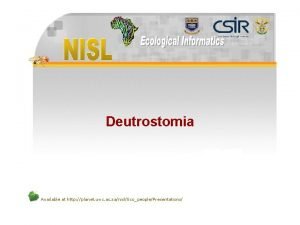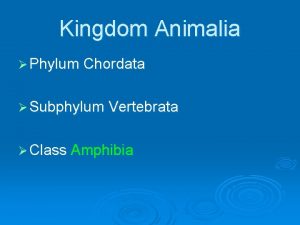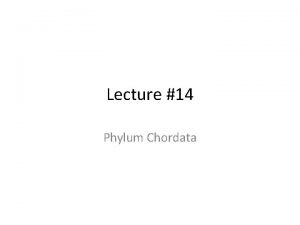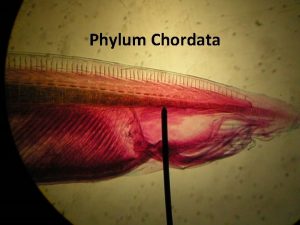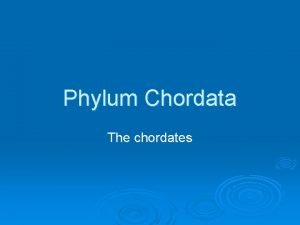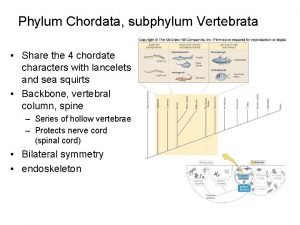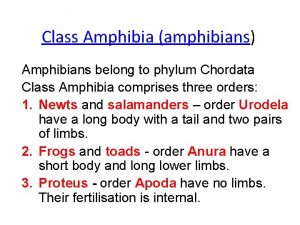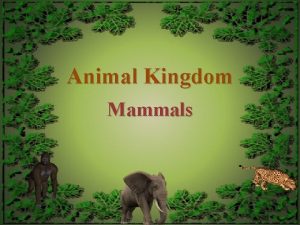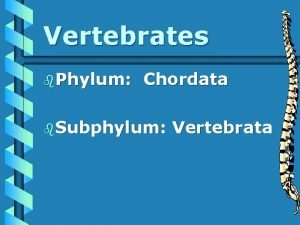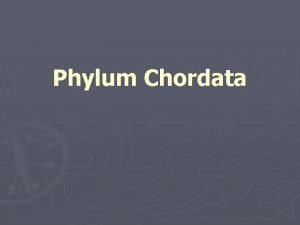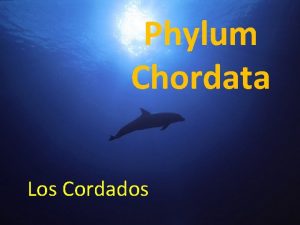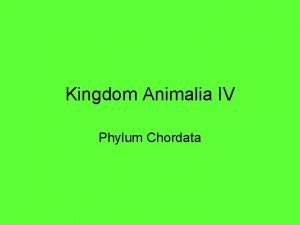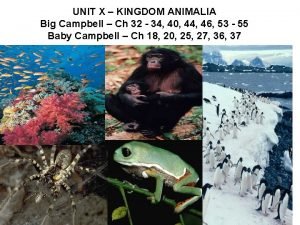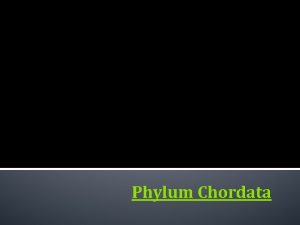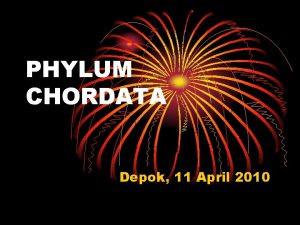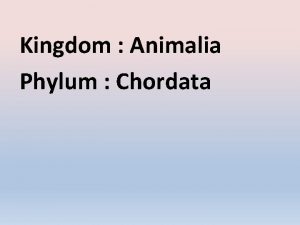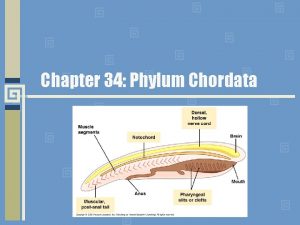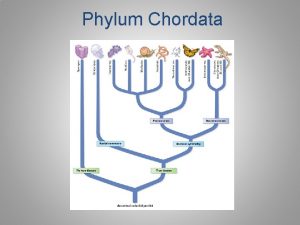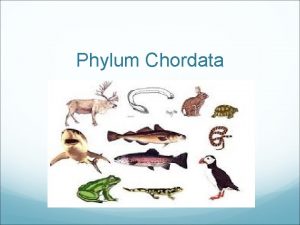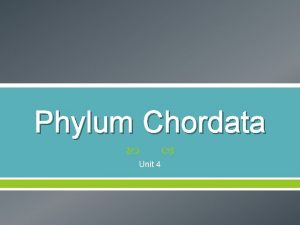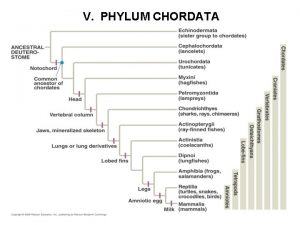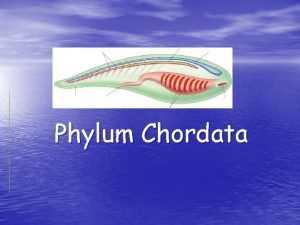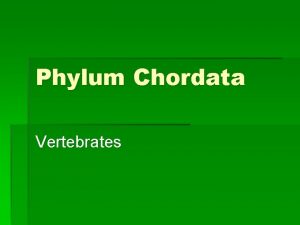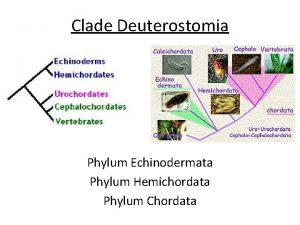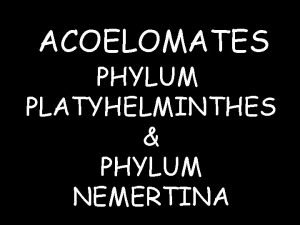Phylum Chordata Phylum Chordata The most complex of















- Slides: 15

Phylum Chordata

Phylum Chordata • The most complex of the animals • Most, but not all, have backbones • Characteristics of all chordates ü Dorsal, hollow nerve cord ü Post-anal tail ü Gill pouches at some time in the live ü Notochord

Characteristics o Notochord n n Longitudinal flexible rod of cartilage located between gut and dorsal nerve cord Persists into adulthood in some chordates In many it is replaced by vertebral column Spongy material between vertebral bones is remnant of notochord

Characteristics o Dorsal Hollow Nerve Cord n n In embryo, formed from a plate of dorsal ectoderm that rolls up into a tube Located dorsal to notochord Unique due to its hollow structure Develops into chordate’s central nervous system

Characteristics o Pharyngeal Gill Slits n Openings of the upper digestive tube in chordates n Pharynx is area just behind mouth n During embryonic stage of chordates these slits connect the outside to the pharynx n Early chordates used them as devices for filter feeding n Evolved and became modified to function in gas exchange

Characteristics o Post Anal Tail n n Most chordates have tail extending beyond the anus Many aquatic species have tail equipped with skeletal and muscular tissue for movement.

Taxonomy of Chordates Taxonomy- the study of classification

Phylum Chordata • Subphylum Urochordata • Subphylum Cephalochordata • Subphylum Vertebrata • Superclass Fishes • Class Agnatha • Class Chondrichthyes • Class Osteichthyes • Class Amphibia • Class Reptilia • Class Aves • Class Mammalia

Subphylum Urochordata • Most are marine • No backbone o Tunicate-sea squirt are most popular example for study o Larva has all four chordate characteristics o Retain only gill slits in adult

Subphylum Cephalochordata o Small marine animals just a few cm. long o Lancelets-blade shape o All four chordate characteristics persist in adult o No backbone

Subphylum Vertebrata • Show all four chordate characteristics at some time in their life. o Additionally, they demonstrate n n n Cephalization Vertebral column (backbone) as part of endoskeleton Closed circulatory System

Superclass Fish Class Agnatha o Characteristicsn n n n Primitive No jaws Cartilaginous skeleton Scaleless skin Oral sucker in place of jaws Predators and filter feeders Anticoagulating saliva Fresh and salt water o Examples n n Lamprey hagfish

Class Chondrichthyes o Cartilaginous skeleton o Skin covered with o o o denticles, not scales Five to seven gill slits per side No swim bladder Internal fertilization Spiral valve intestines Five to seven gill arches • Examples: sharks rays

Class Osteichthyes Bony Fish o Largest group of vertebrates o Calcified skeleton o Great maneuverability o Swim bladder for control of buoyancy

VIDEOS o Crash Course Biology-Chordata o Video 2
 Subphylum urochordata
Subphylum urochordata Deutrostomia
Deutrostomia Phylum chordata class amphibia
Phylum chordata class amphibia Classification of phylum chordata
Classification of phylum chordata Dorsal nerve cord
Dorsal nerve cord Caracteristicas phylum chordata
Caracteristicas phylum chordata Chordata subphylum
Chordata subphylum Phylum chordata class amphibia
Phylum chordata class amphibia Animal con t
Animal con t Characteristics of subphylum vertebrata
Characteristics of subphylum vertebrata Notochord characteristics
Notochord characteristics Portaleto
Portaleto Mnemonic for kingdom phylum
Mnemonic for kingdom phylum What are chordata
What are chordata Phylum chordata
Phylum chordata Entertoxemia
Entertoxemia
